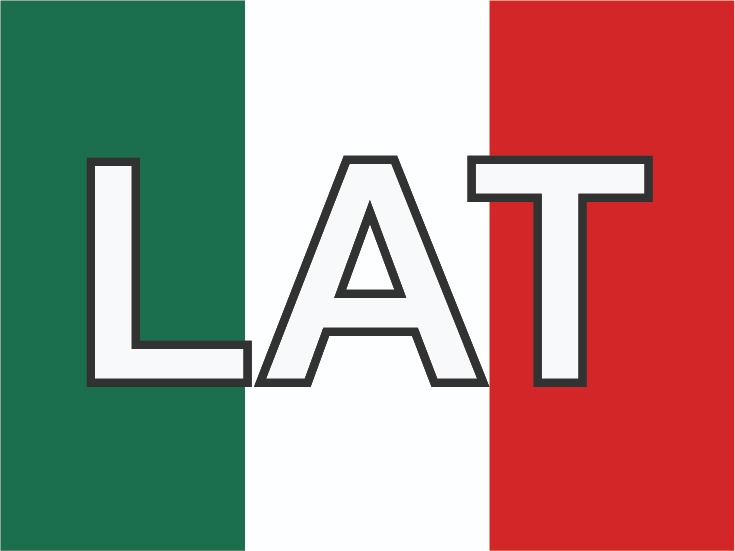Identification of messenger RNA of fetoplacental source in maternal plasma of women with normal pregnancies and pregnancies with intrauterine growth restriction
Abstract
Objective: to quantify placenta-specific RNA in plasma of women carrying foetuses with intrauterine growth restriction and
pregnant women with normal pregnancies.
Materials and methods: 8 pregnant women with foetuses with intrauterine growth restriction were studied as well as 18
women with uncomplicated pregnancies in the third pregnancy trimester. Total free RNA was quantified in maternal plasma
by spectrophotometry and the gene expression of hPL (Human Placental Lactogen) at the messenger RNA level through
technical Real Time-Chain Reaction Polymerase.
Results: plasma RNA of fetoplacental origin was successfully detected in 100% of pregnant women. There were no statistically
significant differences between the values of total RNA extracted from plasma (p = 0.5975) nor in the messenger RNA
expression of hPL gene (p = 0.5785) between cases and controls.
Conclusion: messenger RNA of fetoplacental origin can be detected in maternal plasma during pregnancy.
Authors
Downloads
Keywords
- IUGR
- messenger RNA
- plasma
- complications of pregnancy
- human placental lactogen
- Reverse Transcriptase Polymerase Chain Reaction
References
Molina LM, Barbosa RH. Retardo de crecimiento intrauterino
(RCIU) y sus alteracionesbioquímicas. Nova. 2005(003):88-94.
Kjell Haram ES, Ole Myking. Groeth Restriction: Etiology, Maternal
and Neonatal Outcome. Cirr Wom Health Rev. 2007;3:145-
Kramer MS. The epidemiology of adverse pregnancy outcomes:
an overview. J Nutr. 2003;133(5 Suppl 2):1592S-6S.
Cikot RJ, Steegers-Theunissen RP, Thomas CM, de Boo TM,
Merkus HM, Steegers EA. Longitudinal vitamin and homocysteine
levels in normal pregnancy. Br J Nutr. 2001:49-58.
Markestad T, Bergsjo P, Aakvaag A, Lie RT, Jacobsen G, Hoffman
HJ, et al. Prediction of fetal growth based on maternal serum
concentrations of human chorionic gonadotropin, human placental
lactogen and estriol. Acta Obstet Gynecol Scand Suppl.
;165:50-5.
Pang WW, Tsui MH, Sahota D, Leung TY, Lau TK, Lo YM, et al.
A strategy for identifying circulating placental RNA markers for
fetal growth assessment. Prenat Diagn. 2009;29(5):495-504.
Lo YM, Corbetta N, Chamberlain PF, Rai V, Sargent IL, Redman
CW, et al. Presence of fetal DNA in maternal plasma and serum.
Lancet. 1997:485-7.
Bianchi DW. Fetal cells in the maternal circulation: feasibility
for prenatal diagnosis. Br J Haematol. 1999:574-83.
Poon LL, Leung TN, Lau TK, Lo YM. Presence of fetal RNA in
maternal plasma. Clin Chem. 2000;46(11):1832-4.
Tsui NB, Akolekar R, Chiu RW, Chow KC, Leung TY, Lau TK,
et al. Synergy of total PLAC4 RNA concentration and measurement
of the RNA single-nucleotide polymorphism allelic ratio
for the noninvasive prenatal detection of trisomy 21. Clin Chem.
:73-81.
Tsui NB, Wong BC, Leung TY, Lau TK, Chiu RW, Lo YM.
Non-invasive prenatal detection of fetal trisomy 18 by RNA-SNP
allelic ratio analysis using maternal plasma SERPINB2 mRNA: a
feasibility study. Prenat Diagn. 2009;29(11):1031-7.
Arcelli D, Farina A, Cappuzzello C, Bresin A, De Sanctis P, Perolo
A, et al. Identification of circulating placental mRNA in maternal
blood of pregnancies affected with fetal congenital heart diseases
at the second trimester of pregnancy: implications for early
molecular screening. Prenat Diagn. 2010;30(3):229-34.
Shimizu H, Sekizawa A, Purwosunu Y, Nakamura M, Farina A,
Rizzo N, et al. PP13 mRNA expression in the cellular component
of maternal blood as a marker for preeclampsia. Prenat Diagn.
;29(13):1231-6.
Farina A, Sekizawa A, Purwosunu Y, Rizzo N, Banzola I, Concu
M, et al. Quantitative distribution of a panel of circulating mRNA
in preeclampsia versus controls. Prenat Diagn. 2006;26(12):1115-
Masuzaki H, Miura K, Yoshiura K, Yamasaki K, Miura S, Yoshimura
S, et al. Placental mRNA in maternal plasma and its clinical
application to the evaluation of placental status in a pregnant
woman with placenta previa-percreta. Clin Chem. 2005:923-5.
Schmidt M, Hoffmann B, Kimmig R, Kasimir-Bauer S. mRNA
of placental origin in maternal serum of women with normal and
preeclamptic pregnancies. Fetal Diagn Ther. 2009:269-76.
Ng EK, Tsui NB, Lau TK, Leung TN, Chiu RW, Panesar NS,
et al. mRNA of placental origin is readily detectable in maternal
plasma. Proc Natl Acad Sci 2003:4748-53.
Rozen S, Skaletsky H. Primer3 on the WWW for general users
and for biologist programmers. Methods Mol Biol. 2000;132:365-
Overbergh L, Valckx D, Waer M, Mathieu C. Quantification
of murine cytokine mRNAs using real time quantitative reverse
transcriptase PCR. Cytokine. 1999 Academic Press.; 1999:305-12.
Chiu RW, Lui WB, Cheung MC, Kumta N, Farina A, Banzola
I, et al. Time profile of appearance and disappearance of circulating
placenta-derived mRNA in maternal plasma. Clin Chem.
:313-6.
Okazaki S, Sekizawa A, Purwosunu Y, Iwasaki M, Farina A,
Okai T. Measurement of mRNA of trophoblast-specific genes in
cellular and plasma components of maternal blood. J Med Genet.
England; 2006:e47.
Maron JL, Johnson KL, Slonim D, Lai CQ, Ramoni M, Alterovitz
G, et al. Gene expression analysis in pregnant women and
their infants identifies unique fetal biomarkers that circulate in
maternal blood. J Clin Invest. 2007;117(10):3007-19.
Tsui NB, Chim SS, Chiu RW, Lau TK, Ng EK, Leung TN, et al.
Systematic micro-array based identification of placental mRNA in
maternal plasma: towards non-invasive prenatal gene expression
profiling. J Med Genet. 2004;41(6):461-7.
Zhong XY, Gebhardt S, Hillermann R, Tofa KC, Holzgreve W,
Hahn S. Parallel assessment of circulatory fetal DNA and corticotropin-
releasing hormone mRNA in early- and late-onset preeclampsia.
Clin Chem. 2005:1730-3.
The copy rights of the articles published in Colombia Médica belong to the Universidad del Valle. The contents of the articles that appear in the Journal are exclusively the responsibility of the authors and do not necessarily reflect the opinions of the Editorial Committee of the Journal. It is allowed to reproduce the material published in Colombia Médica without prior authorization for non-commercial use




















